Email Marketing Strategy: A Data-driven Guide (with Original Case Studies)

Post summary:
- Email marketing is the most effective marketing channel and for every $1 you spend, you can expect a return on your investment of $51. Are you achieving a high ROI from your email marketing campaigns?
- A successful email marketing strategy is more than tactics. We provide you 5 strategies, including real-life examples of how Amazon, HubSpot and President Barack Obama use email marketing to succeed.
- With 3 unique email marketing strategies, we let you in behind-the-scenes and share case studies on how we used email marketing to achieve a 94% open rate and 30% click through rate.
More than 290 billion emails are sent daily.
This figure is expected to reach 347 billion daily emails by the end of 2023.
Email marketing strategies have changed over the years.
What worked five years ago, now no longer works.
But it's still a key player to any marketing strategy.
In fact, for the very best online marketers’ email marketing is their go-to marketing channel.
Why, you ask?
It's because it brings in the results and delivers the best marketing ROI:
 That’s right!
That’s right!
Email marketing outperforms all online marketing strategies, including SEO, PPC, and content marketing!
An email marketing strategy is an important part of any marketing strategy. Email is the most cost-effective way to promote your products, communicate with your customers and reach your business goals.
And on average, for every $1 you spend on email marketing, you can expect a return of $51 (up from $39 last year)!
Not bad, right?
Here, we will share the best email marketing strategies you can use to achieve extraordinary results through email marketing.
5 strategies for better email marketing campaigns
When you follow these email marketing strategies, email will become your most important channel too!
Let's get started.
1. Personalize your messages
When we say personalized email marketing, we don’t mean that you send an individual email to every single subscriber. Personalization means that you use customer data to create a personalized message.
A great example of a company that does personalization well is Amazon.
All of Amazon's emails are personalized.
It's not "Dear valued customer", but "Dear Steven".
It's not, "You might like these... (randomly generated)", but "You might like these (based on my purchase history)".
To Amazon, email marketing is not just another marketing channel. It's key to of the overall customer experience.
Jeff Bezos, Amazon’s CEO is an email mastermind. Jeff Bezos understands the value of emails and has been known to read through customer complaints. It’s also why more than 35% of all product sales come from recommendations (both via email and on screen).
And it's not just Amazon that have seen these kinds of results through personalization.
A study by Experian found that personalized emails deliver 6x higher transaction rates!
Let’s break this down into numbers we can all understand:
The most recent research found that email marketing generates $0.08 in revenue per email.
That may not sound like much...
But if you send out an email campaign to 500,000 subscribers, you can generate up to $40,000 in revenue.
That's a lot of additional revenue!
But, if you use personalization in your emails, you can expect a lot more!
According to brand new research,
Personalization can generate $20 in ROI for every $1 invested.
How's that for a revenue opportunity?
The best part is this:
70% of brands do not use personalization within their email marketing strategy.
This means that by personalizing your emails, you stand out against the competition.
The simplest form of personalization is to address the reader by name. Most email service providers (ESP) offer this within their functionality and this tactic alone will improve your campaign performance.
For example, email subject lines that are personalized with a recipient’s first name can increase open rates by 16% higher open rates.
 Considering that 47% of all emails are opened because of subject line alone, that’s a sure fire way to get more eyeballs on your email.
Considering that 47% of all emails are opened because of subject line alone, that’s a sure fire way to get more eyeballs on your email.
Outside of using the customer’s name, here are a few more tips to help you get started with personalization:
- Ask for the right information upfront: Great personalization starts way before you hit the ‘send’ button. It all starts with your sign up form. Without data such as name, company and location, you will be very limited with your personalized communication. Remember to only ask for the information you need, rather than the information you want. This is one of the ways that GDPR has impacted marketing teams.
- Use a real reply-to email address: When you use
This email address is being protected from spambots. You need JavaScript enabled to view it. , it takes away the authenticity from the messaging. You want your readers to engage and respond to your campaigns. Use a real reply address will improve credibility and appear more personal.
- Use your real email signature: Just like using a real reply-to email address, you want to use real contact information within the email and the best way to do that is to include your contact details in the email signature. Giving your readers the opportunity to contact you or connect with you online is a great way to be personal and build a relationship with them.
2. Segment your subscribers
According to email marketers, segmentation is second on the top initiatives list this year.
 Do you know why it is so high?
Do you know why it is so high?
It's because when you segment your database, your email campaigns become much more targeted to your audience.
Let’s take a look at an example:
You're hosting a networking event for small business owners located within a 20 mile radius.
How can you expect to get the best turn out for your event?
The answer is segmentation.
The best way to get small business owners to turn up to your event would be to create a segment of people who list themselves as a small business owner that lives within 20 miles of your event and then send them an invite by email. The segmentation part is simple and can easily be done through CRM software.
Compare this to sending one email to your entire database, with subscribers spread across the country (or continent).
How annoying is it to receive an email that invites you to an event that is located on other side of the world?
It's very annoying!
Before you start segmenting your database, let’s take a look at how valuable it can be.
A study by HubSpot found that all email marketing KPIs perform better when you segment your email list.
The segmentation results include increased performance in:
 If you segment your lists, you get better open rates, revenue, leads, transactions and more customers.
If you segment your lists, you get better open rates, revenue, leads, transactions and more customers.
Another benefit is that segmentation goes hand in hand with GDPR and email marketing.
But, does it really work?
Yes!
Here's an example from our own email marketing campaigns:
We recently sent out two email marketing campaigns. Both campaigns had the same subject line and the same content.
The first campaign was sent to our non-segmented email list, while the second was sent to our segmented list (segmented by interest).
The first non-segmented email earned an impressive 42 % open rate and a 4.5% click-through rate.
However, the segmented email campaign earned a 94% open rate and a 38% click-through rate!
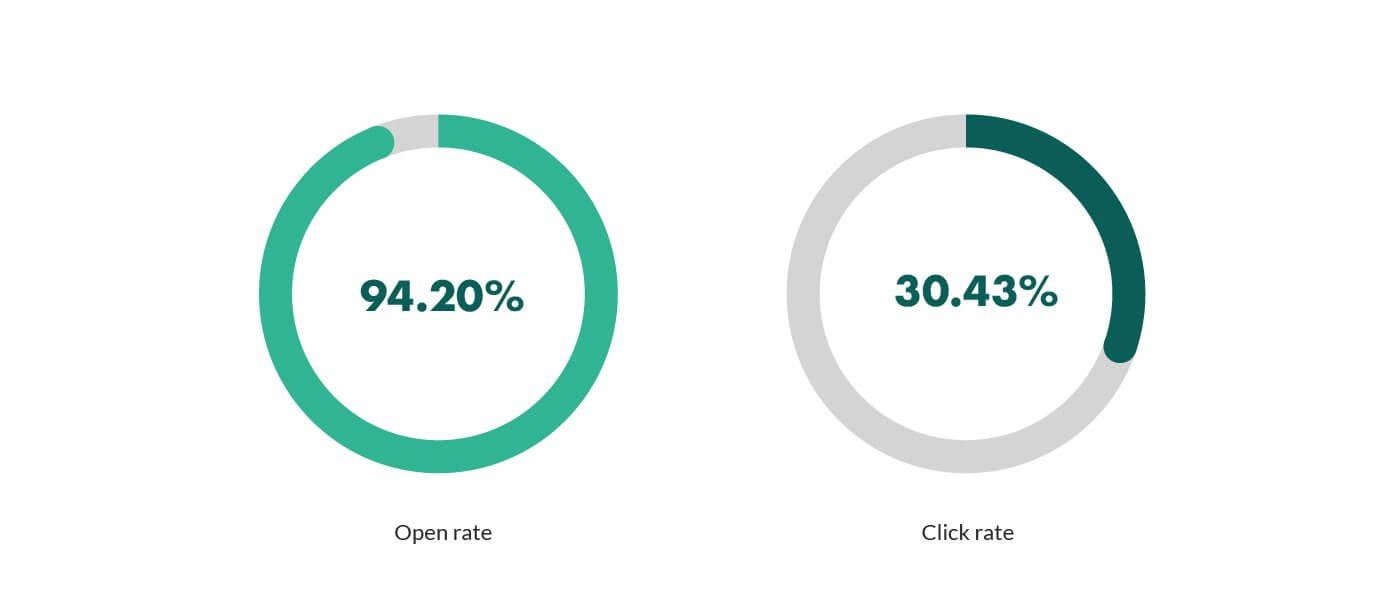 I’d say it’s pretty valuable, wouldn’t you?
I’d say it’s pretty valuable, wouldn’t you?
And that's why so many marketers' are segmenting their emails, right?
Wrong.
As 9 out of 10 email marketers' do not segment their database.
So, here are a few examples for you to get started with segmentation:
- Segment by industry: Do you offer services and products to businesses or consumers? Knowing the industry of your subscribers is a great way to segment your email campaigns. For example, a business that sells car parts would engage at a much higher rate if they receive email campaigns on car products, compared to a business that sells software.
- Segment by company size: Also known as account-based marketing, segmenting email campaigns by company size or annual revenue is a great way to increase response rates. A small business that employs 5 people is not likely ready for the biggest industry conference of the year, whereas a business that employs 750 people might be a better fit.
- Segment by sales cycle: Early stage buyers will not be ready for an aggressive sales pitch or one-to-one demo but, they will be more appreciative to receive an industry research white paper. On the other end of the cycle, buyers who are ready to buy will respond well to product webinars or free trial offers.
3. Send mobile friendly emails
In 2012, 27% of all marketing emails were opened on a mobile device.
By 2014, that number jumped up to 42%.
Now, it’s as high as 61%!
These are huge numbers!
And what do you do as soon as you wake up in the morning?
If you’re like me, I’m guessing you have your phone next to your bed and the first thing you do each morning is check your phone for calls, messages and yes, you guessed it, emails...
Don’t worry, you’re not the only one. 50% of us do this.
When you send an email to a subscriber who reads their emails on their mobile device, but the email is not optimized for that device, what do you think they do with?
Mostly, they will unsubscribe or delete it.
So why is it that almost half of all emails are still not mobile friendly?
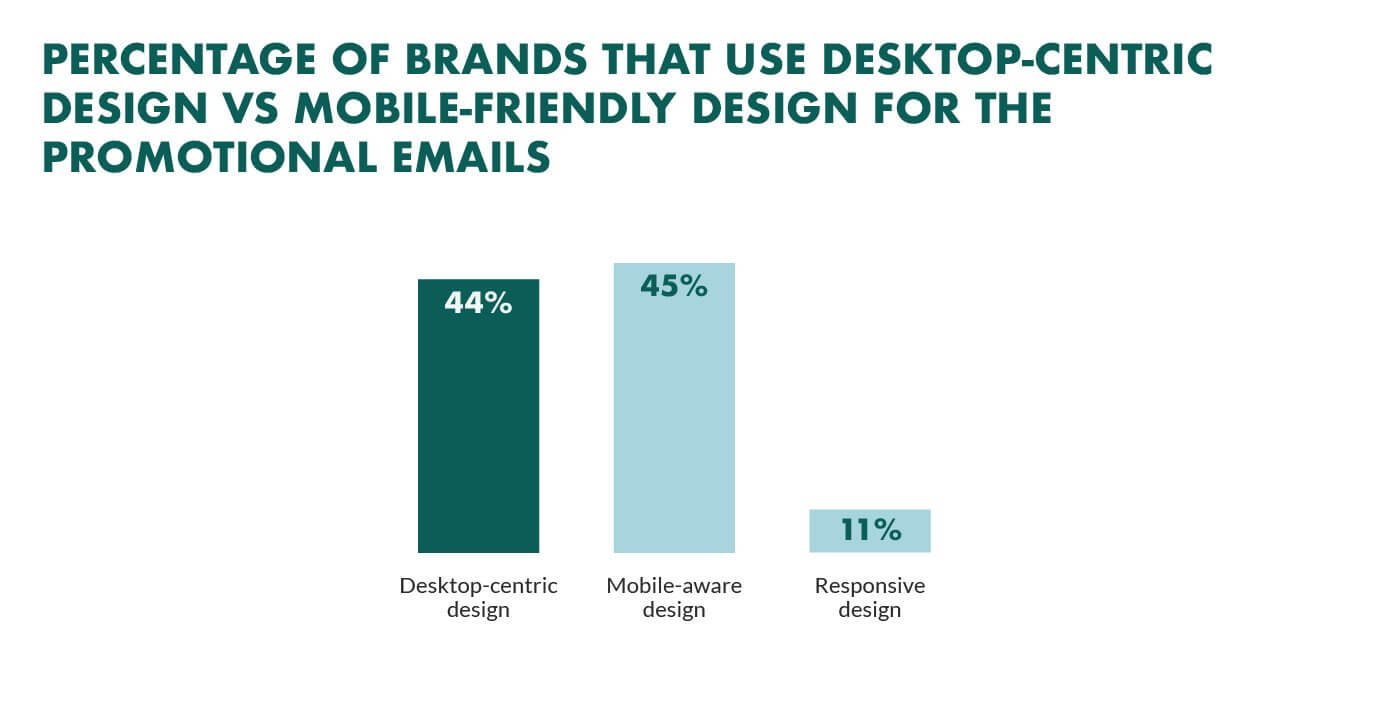 Worse still, our own email marketing research found that 20% of email campaigns are not optimized for mobile.
Worse still, our own email marketing research found that 20% of email campaigns are not optimized for mobile.
Yet on the opposite end of the scale, and when email campaigns are optimized for mobile, they generate a lot of revenue!
The average revenue per mobile email is $0.40, which is more than 4x that of a desktop email click, according to Yesmail.
Revenue per email on mobile devices is 4X higher than desktop
And 55% of smartphone users have made at least one purchase after receiving a mobile promotional email.
Furthermore, a study by Flexmail found that 36% of B2B companies that have optimized their email campaigns for mobile devices saw an overall improvement to their email performance.
So, how do you optimize your campaigns for mobile devices?
Don’t worry, here are some tips on how to do that.
- Implement responsive email design (RED): Creating a responsive email design means that the user experience is optimized regardless of the device or screen they use. Most email service providers (ESP) offer this solution within their email functionality.
- Keep the subject line and pre-header short: The subject line is crucial. Keep it short so the reader knows exactly what the email topic is about. And the pre-header text (also known as snippet text), don’t let it go to waste by using “To view this email in your browser…”. Instead, summarize the email or include a call to action (i.e., Use “FREESHIP” to get free shipping).
- Make the CTA big and obvious: Mobile device vary in size. While a text link may work on a tablet or larger screen, you might be alienating your readers who have a smaller screen (or bigger hands!) if your call to action is too small. Make the call to action, big, bold and simple to click.
4. Test copy, design and buttons
Whether you test your home page, landing pages or email templates, testing provides us with data to make practical decisions that will improve our marketing performance.
And email marketing is no different.
Most marketers have A/B tested their email campaigns.
If I had to guess, I'd say you’ve tested your email subject line, right?
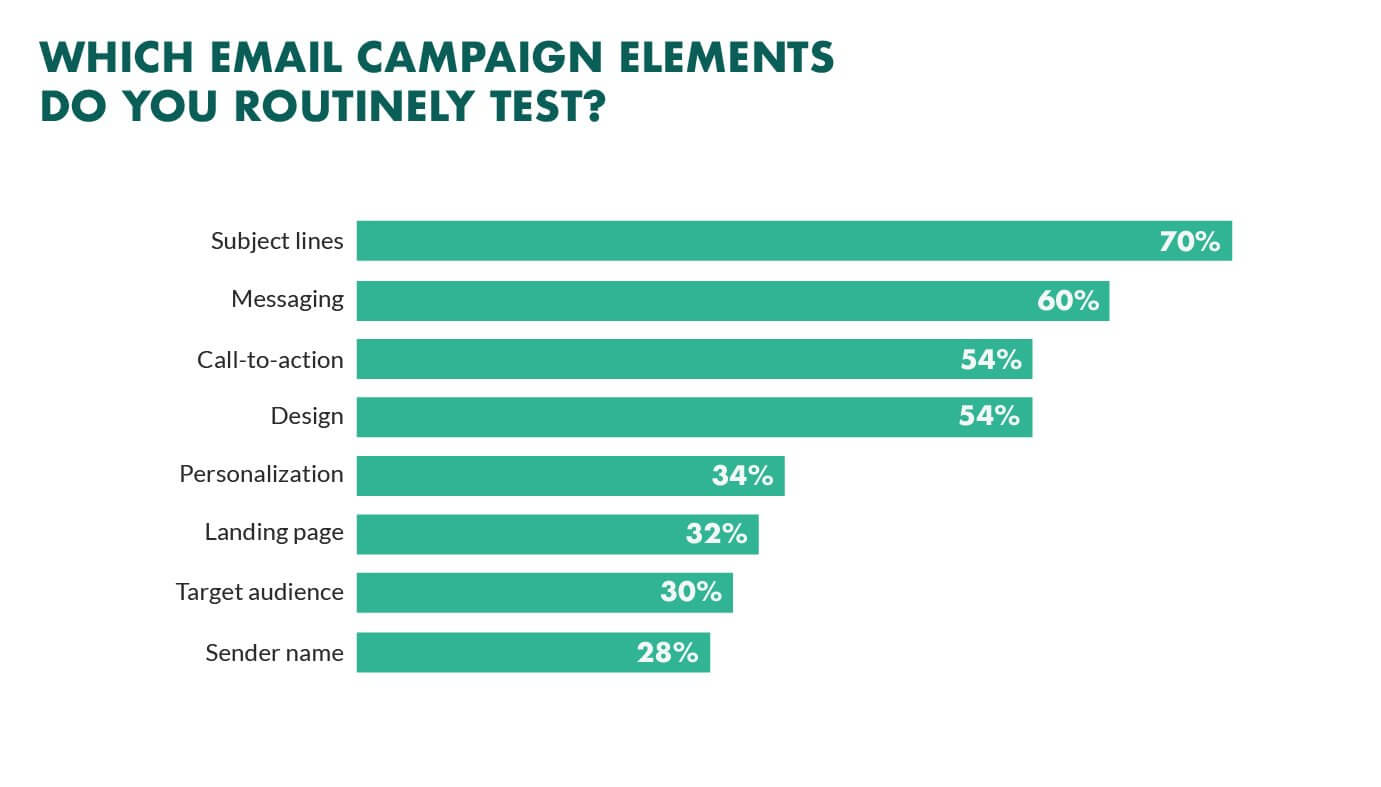 Even the former President of the United States has A/B tested his email subject lines….
Even the former President of the United States has A/B tested his email subject lines….
Think I’m kidding?
Email marketing played a huge part in the success of Obama's 2012 Presidential campaign.
By sending several variations made to the subject line to a small sample of subscribers, they were able to calculate the amount in donations they could expect to receive based on the results.
The sample size revealed that the poorest performing subject line ("The one thing the polls got right.."), when sent to the entire database, would generate $403,603 in donations.
The best performing subject line ("I will be outspent") was expected to generate $2,540,866 in donations.
That's a huge difference!
In fact, the best performing subject line outperformed expectations and generated a total of $2,673,278.
That's an additional $2.2 million in donations raised due to a change in the emails subject line!
President Barack Obama raised an additional $2 million in donations by split testing his email subject line
But it's not only subject lines you can test through email marketing.
You can also test:
- From address: The name that appears in the “from” field has a huge impact on whether the reader opens your email. In fact, the sender name is the main reason why people open your email. Test your from address by sending your campaigns from a person’s name, person + company or from your CEO.
- Plain text vs HTML campaigns: Like most marketers’, I’m sure you are already sending a plain text version of your email. However, have you thought of testing an email campaign that is plain text only? And when you add an element of personalization, plain text emails appear to be written just for the reader.
- Long vs short emails: You can keep your emails short and sweet or, you can create long detailed emails. Long form emails can include more detailed copy whereas shorter emails will send the reader directly to a targeted landing page. The best way to see what works best? Test it.
(Not sure how to design your email campaigns? We've collected 21 of the best B2B email marketing examples from the world's leading SaaS companies.)
5. Automate email campaigns when possible
Trigger-based emails are emails that are sent out automatically based on user behavior.
The most common forms of trigger emails are ‘welcome’ emails, ‘thank you’ emails and ‘transactional’ emails, such as order confirmation email and email receipts.
The data behind trigger emails shows us that trigger emails perform much better than traditional email.
For example, Epsilon found that:
- Open rates for trigger emails are as high as 49% (95% higher than traditional email open rates)
- The average click-through rate (CTR) for trigger emails is more than double the rate compared to traditional email click-through rates
- The best converting websites in the world, sites that convert as much as 40% of their traffic, use trigger emails.
And not only that, Forrester research found that trigger-based email marketing campaigns can generate 4x more revenue and 18x greater profits!
Does this sound too good to be true?
Well, it's not. We've tested it. And it works!
Below is a comparison for our traditional email campaign (left) against our triggered email campaign (right):
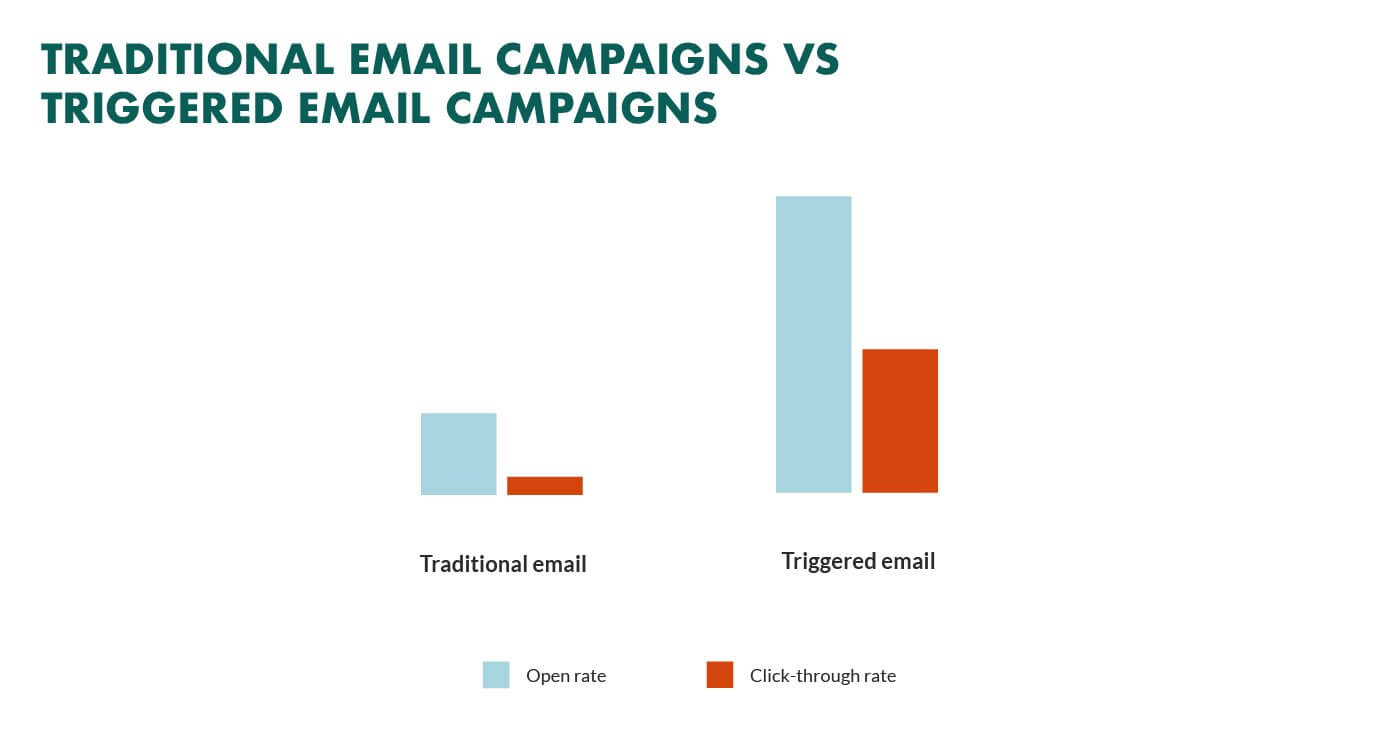
Our triggered emails generated 5x higher open rates and 15x higher click-through rates.
Today, only 20% of marketers currently use triggered emails and they make up a low percentage of overall email volume, at around 2.6%. However, they can be responsible for as much as 20% of your email marketing revenue!
Triggered emails perform really well because they hit the email marketing sweet spot.
What does the email marketing sweet spot look like, you ask?
It looks like this:
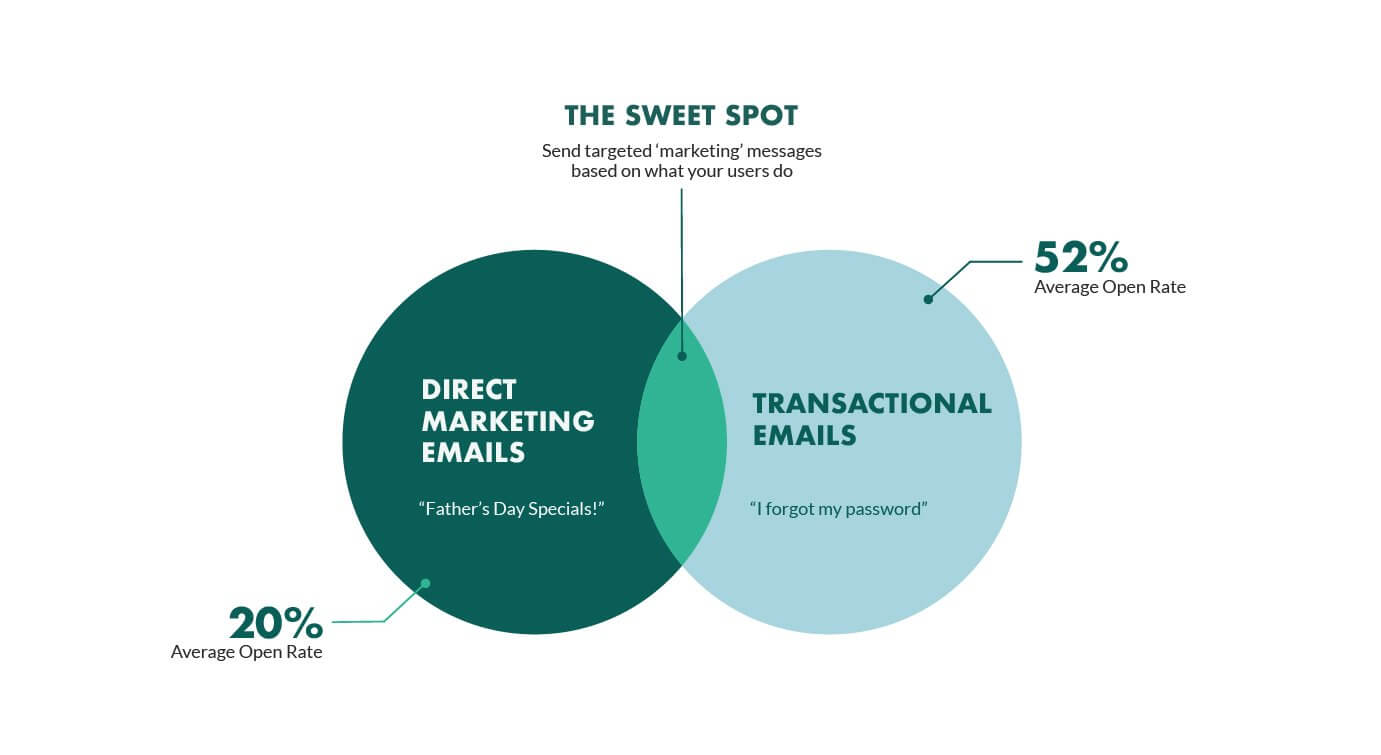
And the reason why they perform so well is because of context.
Consider the following scenario;
You visit a website, browse the product line and add items to your shopping cart but, you begin to have doubts and decide to leave before completing a purchase.
Sound familiar?
This happens to every single eCommerce store, every single day.
But what if, one hour later, you receive an email that includes the exact product you were shopping for?
And what if this email included not only a quick-link back to your shopping cart but, a free shipping code or 10% discount?
You’re now more likely to complete your purchase, aren’t you?
That’s the power of trigger emails.
But setting up triggered emails is expensive and complex, isn't it?
It doesn't have to be. You can start by using auto-responders in your customer service software to replicate the automation aspect. That's what we do for all of our existing triggered emails and we're happy with it.
Here are some examples of trigger mails you can send;
- Activation: A new user creates an account but, they do not use your product within the first 7 days. Create an "activation" campaign that sends an automated email with their login information, steps on how they can get started and include a video demonstration for additional support. You can also invite them to a one-on-one meeting to walk them through the product and answer any questions they may have.
- Win-back: An existing customer is soon approaching the end of his yearly subscription. The customer hasn't used your product in 3 months and you need a way to win them back and keep them for another year. Create a "win back" email that sends an automated email to all customers that are coming to end of their contract with a list of new product features and a short plan on expected releases in the next six months.
- Surprise: Customer loyalty is the key to success. And you can reward your loyal customers by giving them something for free every now and then. Create a "surprise" email that sends an automated email to your best customers that offers a free yearly license to your software for them to use, a gift card or even a coupon code to redeem a box of cupcakes. It’s a small cost for your business but, the reward is huge!
Source: This article was originally published on: SuperOffice and written by Steven MacDonald. Image by jannoon028 on freepik.com












